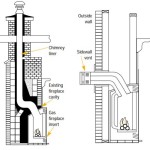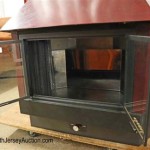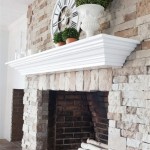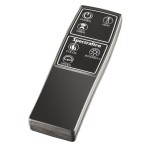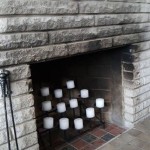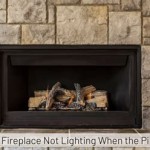Whitewashed Brick Fireplace: A Comprehensive Guide
The whitewashed brick fireplace is a design element that seamlessly blends rustic charm with modern aesthetics. It offers a sophisticated and versatile upgrade to any living space, brightening the room while retaining the textural appeal of the original brick. This article provides a comprehensive exploration of the whitewashed brick fireplace, discussing its benefits, the process of whitewashing, design considerations, maintenance, and alternative approaches to achieving a similar look.
Benefits of Whitewashing a Brick Fireplace
Whitewashing a brick fireplace offers numerous advantages, enhancing both the visual appeal and functionality of the hearth. These benefits extend beyond purely aesthetic considerations, impacting the overall ambiance and value of the home.
One primary benefit is the brightening effect. Brick, especially older bricks, often possesses a dark, earthy tone that can make a room feel smaller and more enclosed. Whitewashing reflects light, effectively brightening the space and creating a more open and airy atmosphere. This is particularly useful in rooms with limited natural light or darker color palettes.
Furthermore, whitewashing offers a versatile design solution. The neutral color palette complements a wide range of interior design styles, from farmhouse and coastal to contemporary and minimalist. It allows for greater flexibility in decorating, as the whitewashed brick serves as a neutral backdrop that does not clash with other colors or patterns. This adaptability makes it a popular choice for homeowners seeking to update their living space without undertaking a complete renovation.
Another advantage is the ability to retain the texture and character of the brick. Unlike painting, which completely covers the brick surface, whitewashing allows the natural texture and imperfections of the brick to show through. This preserves the rustic charm and historical appeal of the fireplace, adding depth and visual interest to the room. The subtle variations in color and texture create a unique and personalized look that cannot be replicated with other materials.
Finally, whitewashing can be a cost-effective way to update a fireplace. Compared to more extensive renovations, such as replacing the entire fireplace or installing a new surround, whitewashing is a relatively inexpensive project that can be completed in a weekend. The materials required are readily available and affordable, making it an accessible option for homeowners on a budget.
The Whitewashing Process: A Step-by-Step Guide
The process of whitewashing a brick fireplace involves careful preparation, application, and sealing to ensure a durable and aesthetically pleasing finish. While the project is relatively straightforward, following these steps meticulously will yield professional-looking results.
The first step is preparation. This involves thoroughly cleaning the brick surface to remove dirt, dust, soot, and any other contaminants. A solution of trisodium phosphate (TSP) and water is recommended for cleaning brick, as it effectively removes grease and grime without damaging the brick. Use a stiff-bristled brush to scrub the brick, paying particular attention to crevices and mortar joints. Rinse thoroughly with clean water and allow the brick to dry completely before proceeding. This cleaning step is crucial for ensuring proper adhesion of the whitewash.
Next, protect the surrounding areas. Use painter's tape and drop cloths to cover floors, walls, and furniture near the fireplace. This will prevent accidental splatters and spills during the whitewashing process. Proper protection will save time and effort in the long run by minimizing clean-up.
Prepare the whitewash mixture. A common and effective method involves diluting latex paint with water. The ratio of paint to water will determine the opacity of the whitewash. A ratio of 1:1 will provide a more opaque finish, while a ratio of 1:2 or 1:3 will create a more translucent effect. Experiment with different ratios on a small, inconspicuous area of the brick to determine the desired level of coverage. It's advisable to use a flat or matte latex paint for a more traditional whitewashed look. Avoid using gloss or semi-gloss paints, as they will create a shiny and less natural finish.
Apply the whitewash using a brush, roller, or sponge. A brush is ideal for getting into the mortar joints and creating a more textured look. A roller can be used for larger, flatter surfaces. A sponge can be used to dab the whitewash onto the brick, creating a more subtle and uneven finish. Apply the whitewash in thin, even coats, working in small sections at a time. Allow each coat to dry completely before applying the next. The number of coats will depend on the desired level of opacity. For a more distressed look, gently wipe away some of the whitewash with a damp cloth while it is still wet. This will expose more of the original brick and create a more weathered appearance.
Finally, consider sealing the whitewashed brick. While not always necessary, sealing can provide added protection against dirt, soot, and moisture. A clear, matte sealant is recommended to preserve the natural look of the brick. Apply the sealant according to the manufacturer's instructions. Ensure proper ventilation during application and drying.
Design Considerations and Alternative Approaches
Beyond the basic whitewashing process, several design considerations and alternative approaches can further enhance the look of a brick fireplace. These options cater to diverse aesthetic preferences and practical needs.
One key consideration is the level of whitewashing. A full whitewash completely covers the brick, creating a uniform white surface. A partial whitewash, also known as a German smear technique, involves applying the whitewash unevenly, leaving some of the original brick exposed. This technique creates a more textured and rustic look. Dry brushing is another technique where a brush with very little paint is used to lightly apply whitewash, creating a subtle and aged effect.
Another design element to consider is the color of the whitewash. While white is the most common choice, other colors can be used to create different effects. Off-white, cream, or light gray can provide a softer and more subtle look. Tinted whitewash can also be created by adding a small amount of color pigment to the whitewash mixture. Experimenting with different colors can help to complement the existing decor and create a unique and personalized look.
Alternative approaches to achieving a similar look include using lime wash. Lime wash is a traditional finish made from slaked lime and water. It provides a similar look to whitewash but with a more natural and breathable finish. Lime wash is more environmentally friendly than latex paint and can create a more authentic and historical look. However, lime wash can be more challenging to apply and may require more maintenance than latex whitewash.
Another alternative is to use a faux brick panel. Faux brick panels are lightweight and easy to install. They can be painted or whitewashed to create the desired look. Faux brick panels are a good option for homeowners who do not have a brick fireplace or who want to cover up an existing unsightly fireplace. However, faux brick panels lack the authentic texture and character of real brick.
Finally, consider the surrounding decor. The whitewashed brick fireplace should complement the overall style of the room. Incorporate natural elements, such as wood and stone, to enhance the rustic charm of the fireplace. Use neutral colors and soft textures to create a calming and inviting atmosphere. Add decorative accents, such as candles, plants, and artwork, to personalize the space and make it your own.
Ultimately, the choice of whitewashing technique, color, and surrounding decor will depend on individual preferences and the desired aesthetic. Careful planning and execution will result in a beautiful and functional whitewashed brick fireplace that enhances the overall value and enjoyment of the home.

How To Whitewash Fireplace Brick Allisa Jacobs

How To Whitewash Brick Sand And Sisal

Diy Whitewashed Fireplace Makeover White Wash Brick Home

Whitewash A Brick Fireplace

Ten Things To Know Before You Whitewash Your Brick Re Invintage Home

How To Whitewash A Brick Fireplace Easiest Method For 2024

How To Whitewash A Brick Fireplace Easiest Method For 2024
The Yellow Cape Cod White Washed Brick Fireplace Tutorial

Whitewash Your Brick Fireplace With Limewash Paint Romabio

Diy Whitewashed Brick Fireplace Step By Tutorial Mainely Katie
Related Posts


